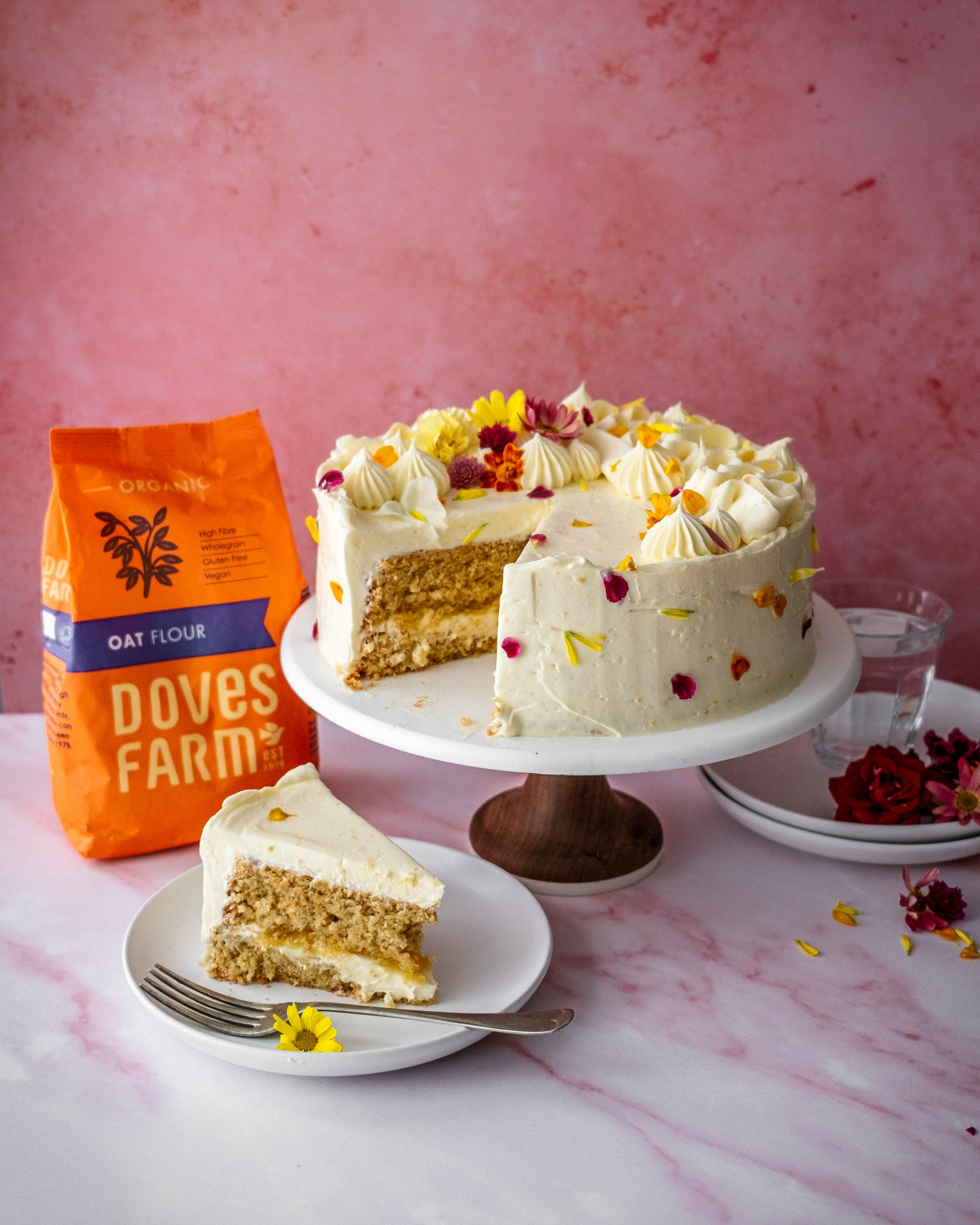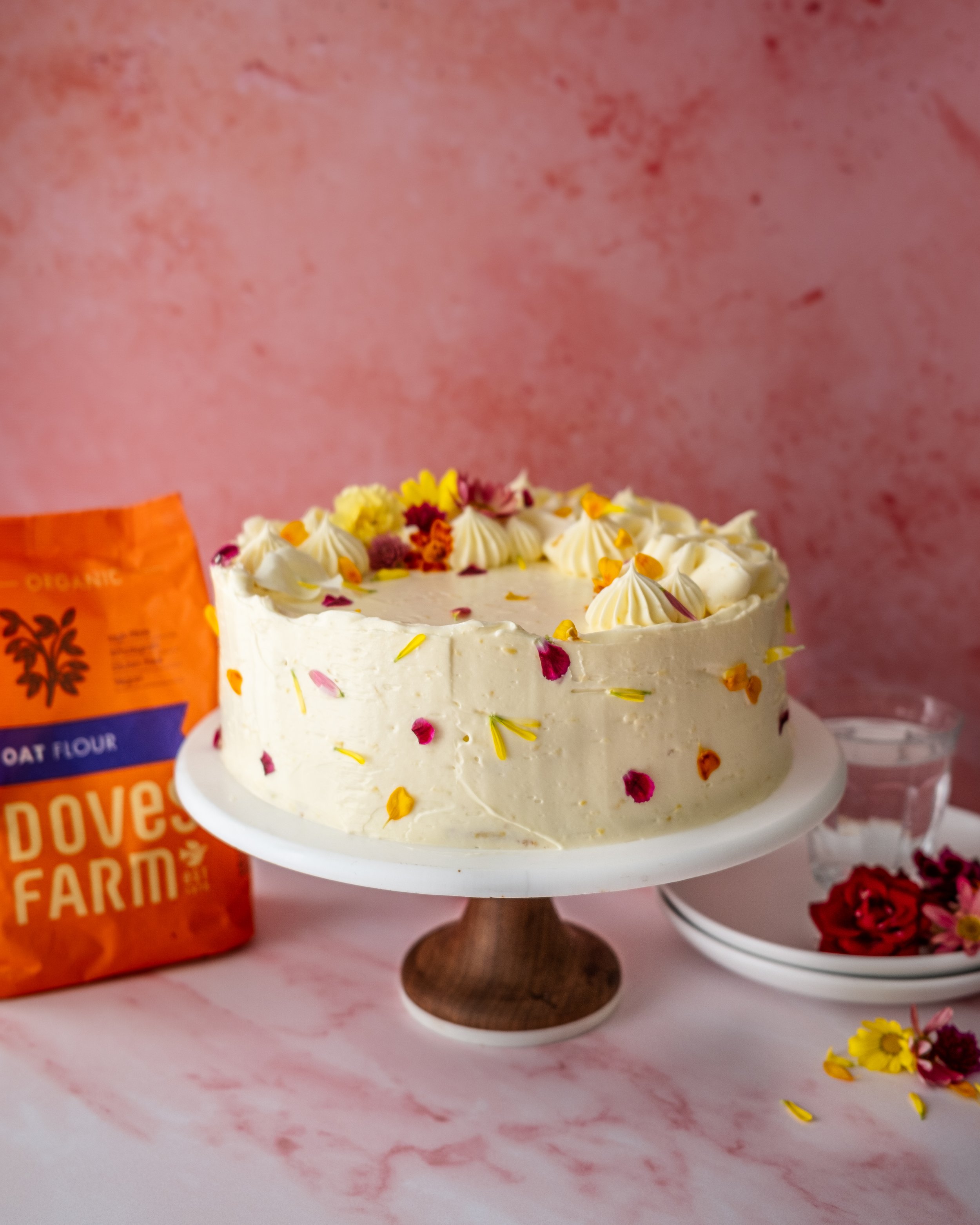Lets talk sponge cake. Not in the way that cakes are often generically referred to as a sponge (Victoria I am looking at you!), but actual sponge cake. By that I mean cakes which are traditionally leavened solely through the whisking of eggs (either whole or egg whites), and now in modern times with a little help from a chemical leavener too This would include Angel Food Cake, Swiss Roll, Jaconde and of course Genoise, probably the most well known sponge. But today I want to talk about one of my personal favourite sponge cakes to make, the chiffon. Chiffon cakes are defined as a sponge cake made with whole eggs and for the fat a little oil, they are also traditionally baked in tube pans although they do not need to be. It differs from, the very similar, angel food cake because the latter is made only with egg whites and made without any additional fat. I have a strong preference for chiffon because the oil and egg yolks add fat, making for a moister cake. I also like that once you’ve learnt to make a chiffon batter you can also use the cake for all manner of recipes. The sponge can be used as a roll cake, a layer cake, a sheet cake or of course, as is traditional, baked into a tube pan. The lightness of the cake means this style works great for summer recipes, when butter-rich cakes may not be the thing you are craving.
This particular chiffon recipe is inspired by a trip to Japan my boyfriend and I took about 5 years ago. If you’ve ever visited Japan you’ll likely know that in the basement of most department store you’ll find incredible food halls. The fancier department stores have high end French patisseries and Japanese chocolatiers and fine Spanish Jamon purveyors but even the more everyday department stores have the most incredible offerings. In one of the many Tokyo depāto’s, we were offered a small sample of a very plain looking cake, no frosting, no decoration, just very plain looking sponge. The flavour belied the look however, as it had the most intense maple flavour. It was incredible and I was sorely tempted to buy the entire cake right there and then, but my brain had more sense than my stomach and I very sadly passed up on the opportunity. The idea and flavour has stuck with me all these years and this was my first attempt at recreating it. I will offer this caveat before we get started, I do not know quite how they got such a strong flavour from maple without using artificial extracts and as I don’t ever have maple extract on hand my version has a more gentle maple flavour but it’s a delightful cake nonetheless. To get as much maple flavour into the cake as possible I used both maple syrup and maple sugar. Maple sugar is a granulated sugar maple from early season maple syrup, and because it’s early season syrup the flavour is more mild. Because of this, if you don’t want to go to the expense of buying this type of sugar you can replace it with either white sugar, golden sugar or a light brown version, the choice is yours.
To serve I like to cut a wedge of the cake and serve it alongside whipped cream and roasted strawberries, making a light but wonderfully flavourful summer dessert. Because the cake is low in fat you want to make sure it is always covered because once sliced it can dry out quickly.
Maple Chiffon Cake
Serves 12-15
8 large eggs, separated
65g maple sugar (or alternatives, see above)
3/4 tsp fine sea salt
1 tsp vanilla bean paste
120ml whole milk
2 1/2 tbsp maple syrup
80ml vegetable oil
135g plain flour
1/2 tsp cream of tartar
90g maple sugar
Preheat the oven to 170ºC (150ºC Fan).
Add the egg yolks, maple sugar, salt and vanilla to a large bowl and using an electric mixer whisk on high speed for about 3-5 minutes or until light and pale. Continue whisking on low speed whilst you pour in the milk, maple syrup and the oil. Once fully combined sieve in the flour and mix together until you have a smooth batter.
Clean the whisk from your mixer and make sure the bowl is spotlessly clean. Add the egg whites and the cream or tartar to the mixer bowl and whisk on medium/high speed until the mixture has started to form a dense looking foam. With the mixer still running slowly pour in the second amount of maple sugar, a little at a time. Once all of the sugar has been added, continue whisking until the meringue holds medium peaks. The meringue should be glossy but not dry, it still needs to have a little fluidity otherwise it can be hard to combine into the batter without losing lots of volume.
Add a quarter of the egg whites to the egg yolk batter and use a balloon whisk to fold the two mixtures together. I like to use a balloon whisk for this task as it the most effective tool for folding these two batters together without overly deflating the meringue. Repeat this process, adding a quarter of the meringue at a time. Once all of the meringue has been added and the batter is streak free it is ready to be baked.
Pour the batter into a 10-inch two-piece tube pan. It is important that the pan is made of two parts, the outer tin and the base with the central column. If you have a tube pan without a removable base it is close to impossible to remove the cake. It is also important that the pan not be greased or lined with parchments as to allow the cake to rise to its full potential it needs to cling to the sides of the tin so it can hold itself up. Once the batter is in the pan gently level it out and then give the pan a few firm taps on the worksurface to knock out any large airpockets. To further ensure the cake batter is free of air pockets I like to swirl a skewer through the batter a couple times to make sure the batter is smooth.
Bake in the preheated oven for about 60 minutes or until a skewer inserted in the cake comes out clean and the cake springs back to a light touch. Remove the cake from the oven and invert the cake upside down. This will sound peculiar if you’ve never done it but trust me, it helps to retain the shape and height of the cake. Most tube pans have feet around the edge of the pan to elevate it when the cake is cooling upside down but, if yours does not and the central tube is similarly level to the height of the pan, you can simply invert the cake so the tube sits atop a wine bottle as it cools.
After an hour the cake should be full cool and you can remove it from the pan. To do so you need to run a thin flat knife or palette knife around the outside of the cake to separate the sponge from the pan. You can then push the base with the cake attached out from the pan and use the knife to repeat the process for the base of the cake. Invert the cake onto a serving platter and serve as you wish. It can be served simply with a dusting of icing sugar or, as I prefer, with a dollop of whipped cream and some oven roasted strawberries.
The cake is best within a couple days of baking.










